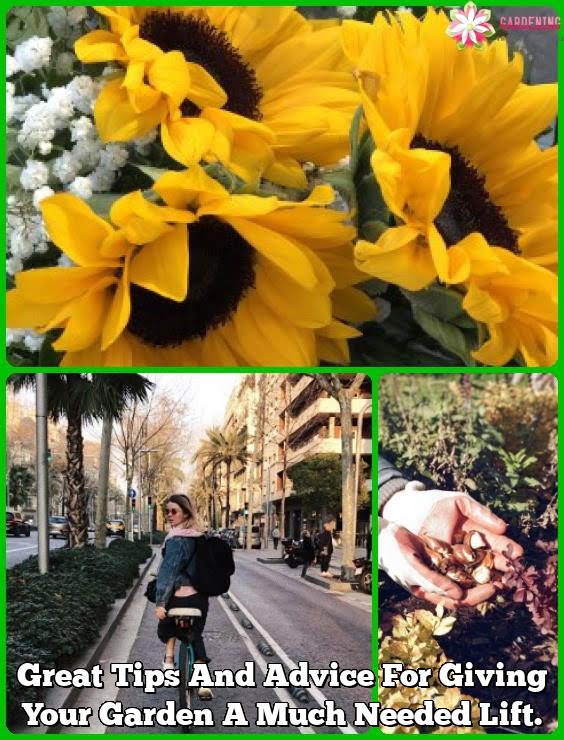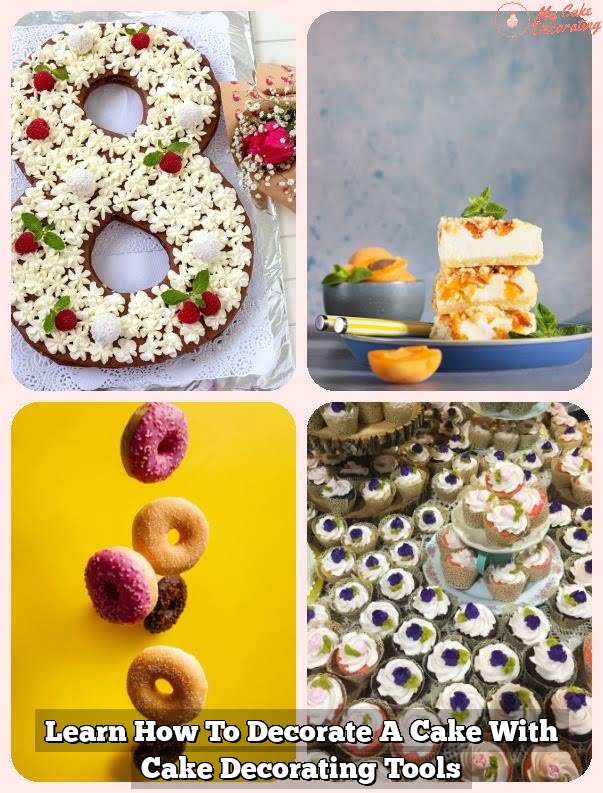Decorating a cake is an essential part of the baking process, as it greatly impacts the overall presentation and appeal of the finished product. The right tools and techniques can elevate a simple cake into a stunning masterpiece, making it a focal point of any celebration or event. Whether you are a professional baker or a home baker, having the necessary supplies and knowledge for cake decoration is crucial in achieving the desired results.
When it comes to decorating a cake, there are several essential tools that are needed to create beautiful designs and finishes. From piping bags and tips to spatulas and cake combs, each tool plays a unique role in achieving different decorative effects. Additionally, the type of frosting used also contributes to the overall look of the cake, making it important to choose the right one for the desired outcome.
In addition to tools and frosting, adding color to the design is another important aspect of cake decoration. There are various coloring agents available such as gel food coloring, powdered food coloring, and natural food dyes, each offering different options for achieving vibrant hues. Furthermore, incorporating decorative elements like edible flowers, sprinkles, edible glitter, and chocolate molds can further enhance the visual appeal of the cake.
Essential Tools
When it comes to decorating a cake, having the right tools is essential for achieving professional-looking results. Here are some of the necessary tools needed to decorate a cake:
- Piping Bags: Piping bags are essential for creating intricate designs and frosting swirls on cakes. They come in disposable and reusable options, allowing for both convenience and versatility.
- Tips: Piping tips come in various shapes and sizes, each designed for different decorative purposes such as creating borders, flowers, or writing on cakes.
- Spatulas: Both straight and offset spatulas are important for smoothing frosting and applying it evenly to the cake’s surface. These tools help achieve a professional finish.
- Turntable: A turntable is used to rotate the cake while decorating, making it easier to apply frosting and create smooth, even designs around the entire cake.
- Cake Combs: Cake combs are used to create textured finishes on frosted cakes, adding a decorative touch to the overall appearance of the dessert.
Having these essential tools on hand ensures that decorators have what is needed to decorate a cake effectively. Whether it’s creating intricate piping designs or achieving a perfectly smooth finish, these tools are indispensable for successful cake decoration.
In addition to these tools, having an offset spatula is also crucial as it helps bakers level out batter so that every layer of your confection measures up during preparation. Working with parchment paper can also be useful for lining round pans when you’re preparing your ingredients beforehand. Lastly, keeping an eye out for depth markers in your mixing bowls can be beneficial once it’s time for bruising heavy cream or egg whites.
Types of Frosting
When it comes to decorating a cake, choosing the right type of frosting is crucial. Each type of frosting offers different characteristics and benefits that can enhance the overall look and taste of the cake. The three most common types of frosting used for cake decoration are buttercream, fondant, and royal icing.
Buttercream is a popular choice due to its creamy texture and versatility. It can be easily tinted with food coloring to create various colors for decorating cakes, and it can also be piped into intricate designs using different tips. Buttercream has a rich flavor that complements many cake flavors, making it a go-to option for both professional bakers and home bakers.
Fondant, on the other hand, provides a smooth and flawless finish to cakes. It is made from sugar, water, and gelatin, resulting in a pliable dough-like consistency that can be rolled out and draped over cakes for a clean canvas for decorations. Fondant can also be shaped into 3D figures or molded into intricate details, making it ideal for creating elaborate designs.
Royal icing is another type of frosting commonly used for detailed cake decorations. It is made from powdered sugar and egg whites, giving it a hard and glossy finish when dried. Royal icing is perfect for creating delicate designs like lace patterns or intricate piping work on cakes.
In summary, each type of frosting offers its own unique qualities that cater to different styles of cake decoration. Understanding the characteristics of each type will help bakers choose the best option based on their specific design needs.
| Type of Frosting | Usage |
|---|---|
| Buttercream | Versatile and rich flavor; ideal for piping designs |
| Fondant | Provides a smooth finish; perfect for elaborate designs or sculpted figures |
| Royal Icing | Ideal for intricate details; dries to form a hard finish |
Coloring Agents
When it comes to decorating a cake, one of the essential elements is adding color to the frosting. The right coloring agents can bring life and vibrancy to the cake, making it visually appealing. There are several options available for adding color to frosting, each with its own unique characteristics and uses.
Gel Food Coloring
Gel food coloring is a popular choice for cake decorators due to its vibrant colors and concentrated formula. It’s easy to control the intensity of the color by adjusting the amount added to the frosting, allowing for precise customization. Gel food coloring is also ideal for achieving bold and bright hues without altering the consistency of the frosting.
Powdered Food Coloring
Powdered food coloring is another option that provides intense colors without affecting the texture of the frosting. It can be particularly useful when working with chocolate or ganache-based frostings, as it won’t add additional moisture. Powdered food coloring comes in a wide range of shades and is easy to blend, making it versatile for various decorative techniques.
Natural Food Dyes
For those looking for natural alternatives, natural food dyes derived from fruits, vegetables, and spices are a great option. These dyes are free from synthetic additives and offer a more subtle color palette compared to artificial options. While they may require larger quantities to achieve bold colors, natural food dyes provide an environmentally-friendly approach to cake decoration.
Understanding these different coloring agents and their uses is crucial in achieving the desired look when decorating a cake. Whether opting for vibrant gel food coloring, versatile powdered food coloring, or natural food dyes for an organic touch, choosing the right coloring agent can significantly impact the overall presentation of a decorated cake. Knowing how to use these tools effectively can elevate any cake decorator’s skills and ensure stunning results every time.
Decorative Elements
When it comes to decorating a cake, there are plenty of ways to elevate its appearance and make it truly stand out. In addition to using frosting and piping techniques, incorporating decorative elements can take a cake to the next level.
One popular option is edible flowers, which not only add visual appeal but also impart a subtle flavor to the cake. Edible flowers like roses, violets, and pansies are commonly used for this purpose, adding a touch of elegance and sophistication to the overall presentation.
Another delightful way to enhance a cake’s appearance is by incorporating sprinkles. These tiny, colorful confections come in a variety of shapes and sizes, making them versatile for different themes and occasions. Whether you choose traditional round sprinkles or shaped ones like stars or hearts, they can add a playful and whimsical touch to the cake.
For those looking for an extra dose of sparkle and glamour, edible glitter is the perfect choice. Available in various shades and finishes, edible glitter can be used sparingly or generously to achieve different effects on the cake. It’s an easy way to add shimmer and shine without compromising on taste or safety.
And finally, chocolate molds provide an opportunity for intricate and detailed designs on cakes. By using molds made from high-quality chocolate, bakers can create stunning decorations such as intricate floral patterns, ornate borders, or even custom shapes that complement the theme of the cake.
Techniques
When it comes to decorating a cake, there are various popular techniques that can take your creation to the next level. Whether you’re a beginner or an experienced baker, mastering these techniques can elevate the overall presentation of your cake. Here are some of the most popular cake decorating techniques:
- Piping: Piping is the process of using a piping bag and different tips to create intricate designs on the surface of the cake. This technique allows for precise and delicate decorations such as flowers, leaves, borders, and written messages.
- Flooding: Flooding is a technique commonly used with royal icing or glaze where a thin consistency frosting is applied over a larger surface area of the cake. This technique is often used for creating smooth backgrounds for more detailed decorations.
- Marbling: Marbling involves creating a swirl pattern by gently blending together different colored frostings or batters. This technique adds visual interest and dimension to the cake’s appearance.
Mastering these techniques requires practice, patience, and the right tools. Understanding how to control the pressure and movement of the piping bag, or achieving the right consistency for flooding and marbling are essential skills.
Knowing when and how to use these techniques creatively will greatly enhance your cake decorating skills. With practice and experimentation, you’ll be able to utilize these methods to bring your unique vision to life on every cake you decorate.
Learning these foundational decorating techniques is crucial in order to expand your repertoire and tackle more complex designs in the future. A solid understanding of these basic skills is what is needed to decorate a cake successfully, as they serve as building blocks for creating stunning works of edible art.
Personalization
Personalizing a cake can make it truly special and unique, adding a personal touch that makes it stand out. There are several ways to add a personalized touch to cake decoration, including the use of custom stencils, edible images, and hand-piped lettering.
Custom Stencils
Custom stencils are a popular choice for adding a personalized design to a cake. These stencils can be made from food-safe materials such as plastic or acetate and can be customized with names, dates, or special messages. To use a custom stencil, simply place it on the surface of the cake and sprinkle powdered sugar or cocoa powder over it. Carefully lift the stencil to reveal the personalized design on the cake.
Edible Images
Another way to personalize a cake is by using edible images. These are printed designs made from food-grade ink on edible paper. They can feature anything from photographs to logos and can be easily applied to the surface of the cake using a thin layer of frosting or edible glue. Edible images provide a high level of customization and can transform an ordinary cake into something truly memorable.
Hand-Piped Lettering
For those who prefer a more traditional approach, hand-piped lettering offers a personal and artistic way to customize a cake. Using piping bags and various tips, decorators can create intricate designs and personalized messages directly onto the cake’s surface with colored buttercream or royal icing. This technique requires practice and precision but allows for endless possibilities in terms of personalization.
Adding a personalized touch to cake decoration through custom stencils, edible images, or hand-piped lettering requires creativity and attention to detail. It’s important to consider the overall theme of the event or occasion when choosing how best to personalize the cake with these techniques.
Troubleshooting
Decorating a cake can be an enjoyable and creative process, but it also comes with its own set of challenges. It’s important to be prepared for any potential issues that may arise during the cake decoration process. By knowing how to troubleshoot common problems, decorators can ensure that their final product looks as good as possible.
One common issue that decorators may encounter is air bubbles in the frosting. This can result in an uneven and unattractive appearance on the cake. To prevent this, decorators should make sure to gently tap the cake on the counter after applying the frosting to release any trapped air bubbles. Additionally, using a smoother or offset spatula to smooth out the frosting can help eliminate air bubbles.
Another frequent problem during cake decoration is frosting that is too runny or too stiff. If the frosting is too runny, decorators can add more powdered sugar to thicken it up. Conversely, if the frosting is too stiff, adding small amounts of milk or water while mixing can help achieve the desired consistency.
Additionally, achieving smooth edges on a cake can be challenging for some decorators. To address this issue, using a bench scraper or offset spatula while rotating the turntable can help create clean and even edges on the cake. It’s also important to chill the cake before applying the final coat of frosting to make it easier to work with.
By addressing these common issues and knowing how to troubleshoot them, decorators can ensure that their cakes turn out beautifully decorated. With careful attention to detail and preparation for potential challenges, anyone can create stunning and professional-looking cakes at home with just a few essential tools and techniques combined with knowledge of what is needed to decorate a cake.
Conclusion
In conclusion, it is clear that successful cake decoration requires the right tools and knowledge. The overall presentation of a cake can be greatly impacted by the way it is decorated, making it an essential aspect of baking. From essential tools like piping bags and spatulas to different types of frosting such as buttercream and fondant, each component plays a crucial role in creating a visually appealing and delicious cake.
Understanding the various coloring agents available, from gel food coloring to natural food dyes, allows for creativity and customization in cake decoration. Additionally, the use of decorative elements like edible flowers and chocolate molds adds a unique touch to any cake. With a grasp of popular cake decorating techniques like piping and flooding, individuals can elevate their baking skills to create beautifully decorated desserts.
Moreover, personalizing cakes through custom stencils, edible images, or hand-piped lettering gives bakers the opportunity to express their creativity and add a special touch to their creations. By being aware of common troubleshooting issues during cake decoration and how to address them, individuals can ensure a smooth and successful decorating process. In essence, having the right tools and knowledge is necessary for achieving professional-looking cakes that are not only visually stunning but also delicious.
Frequently Asked Questions
What Do I Need for Decorating a Cake?
Decorating a cake requires a few essential tools and supplies. First, you’ll need a turntable to easily rotate the cake as you decorate it. A set of offset spatulas in various sizes is necessary for smoothing frosting and adding details.
Piping bags with different tips are essential for creating decorative designs. Lastly, you’ll need a cake leveler to ensure even layers before decorating.
What Are the Ingredients for Decorating a Cake?
The ingredients needed for decorating a cake depend on the specific decoration techniques you plan to use. For basic frosting, you’ll need butter or shortening, powdered sugar, vanilla extract, and milk or heavy cream.
Food coloring gels or powders are necessary if you want to color the frosting. Additional ingredients may include fondant, gum paste, edible glitter, or decorative sprinkles depending on the design.
What Material Is Used to Decorate Cakes?
Various materials can be used to decorate cakes, depending on the desired outcome. Frosting is one of the most common materials and comes in various consistencies such as buttercream, royal icing, or ganache.
Fondant is another popular choice for creating smooth and detailed finishes. Edible decorations like fresh fruit, flowers, chocolate curls, and edible gold leaf can also be used to adorn cakes and add visual interest.

Welcome to my blog about home and family. This blog is a place where I will share my thoughts, ideas, and experiences related to these important topics. I am a stay-at-home mom with two young children. I hope you enjoy reading it! and may find some helpful tips and ideas that will make your home and family life even better!





